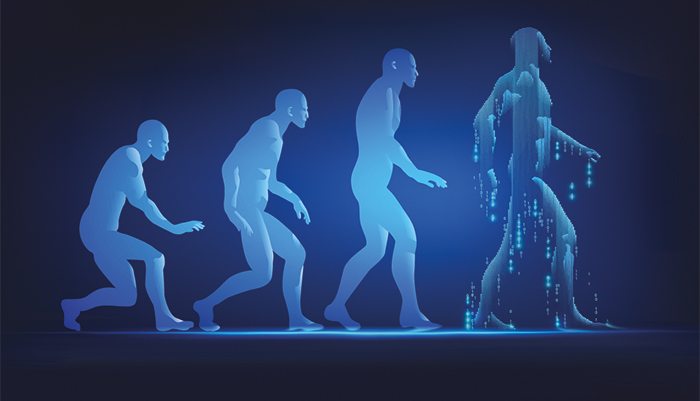There is a delicate balance between leveraging the trusted advisor status of field service engineers to generate revenue and going too far so that the trust they rightfully earn with your customers eventually is broken. But that doesn’t have to be...
ARCHIVE FOR THE ‘customer-satisfaction-and-expectations’ CATEGORY
Sep 23, 2019 • Features • management • Jim Baston • Customer Satisfaction and Expectations
There is a delicate balance between leveraging the trusted advisor status of field service engineers to generate revenue and going too far so that the trust they rightfully earn with your customers eventually is broken. But that doesn’t have to be the case writes Jim Baston...
Sep 23, 2019 • Features • Software & Apps • Ageing Workforce Crisis • Future of FIeld Service • workforce management • field service • Uberization • Industry 4.0 • Customer Satisfaction and Expectations
With an eye to the future and a desire to push today’s technologies to their limit, artificial intelligence (AI) has begun to creep into a variety of service technologies. On its surface, AI might still seem like science fiction, but the number of...
With an eye to the future and a desire to push today’s technologies to their limit, artificial intelligence (AI) has begun to creep into a variety of service technologies. On its surface, AI might still seem like science fiction, but the number of practical use cases will only increase over time. Are you ready to use AI to its fullest potential?
In this series, run in partnership with IFS, we will be looking to see exactly what impact AI will have on the field service sector and how your organisation can harness it. In part one of this series we looked at some of the AI basics and in part two we explored how tomorrow's advancements in AI can guide us through today's digital transformation. Now in the final part in this series we take a look to the future...
Sep 16, 2019 • Features • Software & Apps • Ageing Workforce Crisis • Future of FIeld Service • workforce management • field service • Uberization • Industry 4.0 • Customer Satisfaction and Expectations
With an eye to the future and a desire to push today’s technologies to their limit, artificial intelligence (AI) has begun to creep into a variety of service technologies. On its surface, AI might still seem like science fiction, but the number of...
With an eye to the future and a desire to push today’s technologies to their limit, artificial intelligence (AI) has begun to creep into a variety of service technologies. On its surface, AI might still seem like science fiction, but the number of practical use cases will only increase over time. Are you ready to use AI to its fullest potential?
In this series, run in partnership with IFS, we will be looking to see exactly what impact AI will have on the field service sector and how your organisation can harness it. In part one of this series we looked at some of the AI basics and now we look at how tomorrow's advancements in AI can guide us through today's digital transformation
Sep 13, 2019 • Features • future of field service • Martin Summerhayes • The Field Service Podcast • Customer Satisfaction and Expectations
In the latest Field Service Podcast, Martin Summerhayes ponders service's evolution and plots where we are now and where we are headed.
In the latest Field Service Podcast, Martin Summerhayes ponders service's evolution and plots where we are now and where we are headed.
In this podcast, industry expert and long-term Field Service News collaborator Martin Summerhayes chats to Kris Oldland about the industry as it is today and predicts where it might be going.
Sep 09, 2019 • Features • Software & Apps • Ageing Workforce Crisis • Future of FIeld Service • workforce management • field service • Uberization • Industry 4.0 • Customer Satisfaction and Expectations
With an eye to the future and a desire to push today’s technologies to their limit, artificial intelligence (AI) has begun to creep into a variety of service technologies. On its surface, AI might still seem like science fiction, but the number of...
With an eye to the future and a desire to push today’s technologies to their limit, artificial intelligence (AI) has begun to creep into a variety of service technologies. On its surface, AI might still seem like science fiction, but the number of practical use cases will only increase over time. Are you ready to use AI to its fullest potential?
In this series, run in partnership with IFS, we will be looking to see exactly what impact AI will have on the field service sector and how your organisation can harness it...
Sep 03, 2019 • Features • Management • Ageing Workforce Crisis • workforce management • field service • Uberization • Uberization of field service • Uberization of Service • Industry 4.0 • localz • Customer Satisfaction and Expectations
Field Service in the early decades of the twenty-first century has become an increasingly tricky beast to tame. Customer expectations are hurtling forward at breakneck speed to what some companies view as almost impossible standards to reach. The...
Field Service in the early decades of the twenty-first century has become an increasingly tricky beast to tame. Customer expectations are hurtling forward at breakneck speed to what some companies view as almost impossible standards to reach. The customer of today is not only better informed than ever before, but via the widespread amplification of social media, more powerful also.
In this series, run in partnership with Localz, we look at precisely what these new challenges of modern field service are and how your organisation can adapt and thrive in this brave new world. Part one in the series explored the concept of Customer Expectations 4.0 and in part two we discussed a new approach to FSM systems and then in part three we will take a look at three examples of companies embracing 'Uberization." Now in the final feature in this series we hear from Localz CEO Tim Andrew and explore why happy engineers equals happy customers.
Sep 02, 2019 • Features • Management • Strategy • The Professional Planning Forum • Customer Satisfaction and Expectations
Well-implemented ‘customer first’ strategies open the door for fresh thinking, but are our teams change-ready? Do we ourselves ‘walk the talk’ in building a professional network that connects us with the latest developments in other sectors or...
Well-implemented ‘customer first’ strategies open the door for fresh thinking, but are our teams change-ready? Do we ourselves ‘walk the talk’ in building a professional network that connects us with the latest developments in other sectors or markets? In a new strategic series, Paul Smedley looks at practical examples of successful change in all kinds of service operations.
Every service operation is challenged by digital servitisation. This includes the digital disruption of whole markets, with fierce competition and cost challenges. It requires rising to the challenges of changing customer expectations and the rapid pace of technology change. It means breaking down siloes within our organisations, between sales and operations for instance, as well as beyond, to our supply chain, distributors, outsourced services and other partnerships.
But are we too focussed on what we do and too little aware of trends or technologies that are not even on business radar? What should our priorities be in learning how to rise to these new challenges? Look at it this way: will your organisation ever be in the fast lane if you are re-inventing the wheel because your team is not connected and up-to-date?
In this new series on strategy for Field Service News, I will look at a number of practical examples of how ‘customer first’ approaches bring fresh thinking, giving a reason for everyone to look at business decision making from the outside in. We will see the importance of picking up ideas and approaches from other sectors and from an effective professional network, using these experiences to help engage our own people in making the necessary changes happen in a connected way.
Customer First
The first step is putting service at the heart of our business decisions, in ways that get colleagues working together across the business. Award-wining work at British Engineering Services, for instance, has helped double sales and raise month-end service by 50 per cent.
Effective resource planning means they stand out from competitors on service reliability. What’s more, this information is used by sales and pricing; client-specific requirements can be incorporated with a clear view of costs and risks.
More broadly, many businesses now recognise the value that arises when service people become ‘trusted advisors’ and business joins together around a shared, overarching customer metric. As the Harvard Business Review reported, customers who receive the highest standards of service spend 140 per cent more than those with the poorest service. In business-to-business a 5 per cent uplift in customer retention will typically see profit increase of two to 95 per cent.
DIGITAL DISRUPTION
This illustrates why digital servitisation is transforming how manufacturers think and compete. An organisation that is truly focussed on service stands out from the crowd in any market. Yet, the digital dimension of service growth requires purposeful and co-ordinated effort. This starts when we invest time in understanding the winds of ‘unstoppable change’ and the factors that drive them.
What are the key trends and the latest ideas to watch out for? At a recent networking event for our members hosted by The Times in London, Chris Duncan, the media company's managing director explained that people came to visit them from every sector, because everyone is facing massive disruption and the media industry were early to experience this. In this 225-year-old newspaper, the first ‘paying customer’ came in 2010, with the ‘paywall’ for digital subscribers. How many other organisations have traditionally worked only through distributors or seen the ‘aftermarket’ as a cost function, not value adding.
Data visibility and automation
Joined-up data means we can literally see issues and change business decision-making processes. We can understand the costs of providing a certain type or level of service or ‘downstream consequences’. What if we don’t have the right skill or equipment because our data is out of date? Or if we don’t identify issues that could cause future problems?
More than that, good use of technology can now increasingly automate routine, high-volume tasks – including joining up legacy systems or tracking workflow. Award-wining work at ADT Fire & Security shows demonstrates how making data on engineers’ worktime easy to access gave instant visibility.
The busy summer period was seen to be due to supply (many people off at the same time) rather than demand. It revealed individual’s utilisation and effective performance management started to build a culture in which everyone rose to the productivity challenge. Another powerful example is the growing use of mobile video to allow specialist support for engineers on the ground at the ‘moment of truth’.
culture: this is about people
These examples show how much change impact people, especially a mobile workforce used to being ‘on their own’. How many approaches have failed, because we haven’t engaged ‘hearts & minds’? One factor that is common to every member’s successful service transformation is this capacity to see the human angle – to understand ‘where numbers meet people’.
People need to feel they can still make personal judgements, but equally to see when it is better to be consistent or co-ordinated and to value the support of others. Big productivity savings are common early in a transformation journey, but the real long-term win is engaging people. This translates into tangible benefits for colleagues, customers and the business: more time with customers (not on the road), turning up at a convenient time (when expected), fixing a bunch of issues (in a way that ensures the customer’s equipped stays fixed).
Invest in resource planning.
Crucially, field service companies will only stay in business if they deliver what the customer wants, when and how they want it. Well implemented mobile workforce management’ is a key step and we’ve seen that successful implementations at members like Anglian Water and OpenReach have been achieved by directly involving engineers in the change.
Surprisingly perhaps, effective planning often means fewer people allocating jobs, but better long-term planning. There are some key steps here: create a capacity plan, understand the impact on everybody. In future articles I will share some vital pointers in this area and highlight pitfalls to avoid.build a ‘playbook’ to manage the impact of changes.
A joined-up vision
This takes us back to where we started. If the customer is truly at the heart of everything you do, very soon no stone will be left unturned in the search for better solutions, technologies and operating models. More than that, our people will get it!
Twenty years ago, I founded professional networks and benchmarking for call centres, at a time of rapid transformation. Today, our members are looking at field service, branch operations and the back office, as well as the front office. They are taking learning from one area to apply in another. As people say: “there’s a whole technology or movement that is never flagged up in my business”, “we all face the same challenges” “there’s so much to learn”. I have found that success begins with the attitude we take ourselves. Do we ‘walk the talk’ and get connected personally to look from the outside in?
Paul Smedley leads a best practice network for professionals in service operations across Europe – the Professional Planning Forum, established in Mach 2000. More information about the network can be found here.
Aug 27, 2019 • Features • Management • Ageing Workforce Crisis • workforce management • field service • Uberization • Uberization of field service • Uberization of Service • Industry 4.0 • localz • Customer Satisfaction and Expectations
Field Service in the early decades of the twenty-first century has become an increasingly tricky beast to tame. Customer expectations are hurtling forward at breakneck speed to what some companies view as almost impossible standards to reach. The...
Field Service in the early decades of the twenty-first century has become an increasingly tricky beast to tame. Customer expectations are hurtling forward at breakneck speed to what some companies view as almost impossible standards to reach. The customer of today is not only better informed than ever before, but via the widespread amplification of social media, more powerful also.
In this series, run in partnership with Localz, we look at precisely what these new challenges of modern field service are and how your organisation can adapt and thrive in this brave new world. Part one in the series explored the concept of Customer Expectations 4.0 and in part two we discussed a new approach to FSM systems. Here in part three we will take a look at three examples of companies embracing 'Uberization.'
Aug 26, 2019 • Features • Software & Apps • Operational Efficiency • Video • first time fix • Service Execution Management • Outsystems • Customer Satisfaction and Expectations
The balance between achieving high levels of customer experience and delivering operational excellence that will drive service revenues forwards is a finely nuanced one. In this first excerpt from a video presentation run in partnership with...
The balance between achieving high levels of customer experience and delivering operational excellence that will drive service revenues forwards is a finely nuanced one. In this first excerpt from a video presentation run in partnership with Outsystems we heard from Rachel Brennan, who spoke about the importance of getting this balance correct. Now in the second excerpt from this presentation Phil Bartholow gives a tour of the Outsystems platform to show us how their customers are using the tools to improve their own service delivery

















 Field Service News is published by 1927 Media Ltd, an independent publisher whose sole focus is on the field service sector. As such our entire resources are focused on helping drive the field service sector forwards and aiming to best serve our industry through honest, incisive and innovative media coverage of the global field service sector.
Field Service News is published by 1927 Media Ltd, an independent publisher whose sole focus is on the field service sector. As such our entire resources are focused on helping drive the field service sector forwards and aiming to best serve our industry through honest, incisive and innovative media coverage of the global field service sector.
Leave a Reply